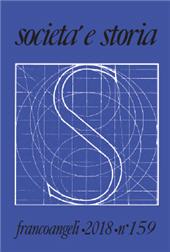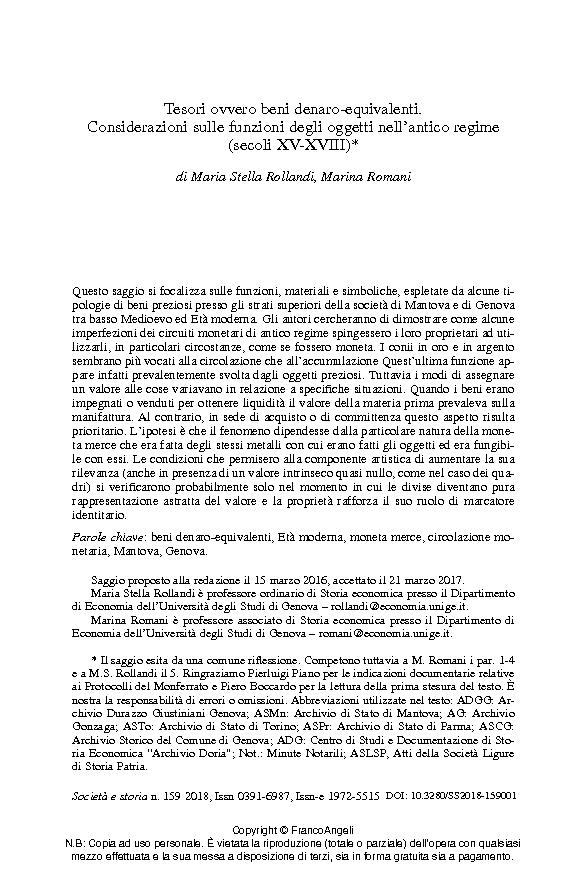Tesori ovvero beni denaro-equivalenti : considerazioni sulle funzioni degli oggetti nell'antico regime (secoli XV-XVIII)
1-34 p.
Questo saggio si focalizza sulle funzioni, materiali e simboliche, espletate da alcune tipologie di beni preziosi presso gli strati superiori della società di Mantova e di Genova tra basso Medioevo ed Età moderna. Gli autori cercheranno di dimostrare come alcune imperfezioni dei circuiti monetari di antico regime spingessero i loro proprietari ad utilizzarli, in particolari circostanze, come se fossero moneta. I conii in oro e in argento sembrano più vocati alla circolazione che all'accumulazione Quest'ultima funzione appare infatti prevalentemente svolta dagli oggetti preziosi. Tuttavia i modi di assegnare un valore alle cose variavano in relazione a specifiche situazioni. Quando i beni erano impegnati o venduti per ottenere liquidità il valore della materia prima prevaleva sulla manifattura. Al contrario, in sede di acquisto o di committenza questo aspetto risulta prioritario. L'ipotesi è che il fenomeno dipendesse dalla particolare natura della moneta merce che era fatta degli stessi metalli con cui erano.
fatti gli oggetti ed era fungibile con essi. Le condizioni che permisero alla componente artistica di aumentare la sua rilevanza (anche in presenza di un valore intrinseco quasi nullo, come nel caso dei quadri) si verificarono probabilmente solo nel momento in cui le divise diventano pura rappresentazione astratta del valore e la proprietà rafforza il suo ruolo di marcatore identitario. [Testo dell'editore].
This essay focuses upon the material and symbolic uses that some precious objects filled in the late Middle Ages and early modern period amidst the upper classes of Mantua and Genoa. The authors will show how the imperfections of some monetary circuits caused the owners of such goods to use them as currency in specific circumstances. Gold and silver coins seemed more suited to circulation than to hoarding. The latter function was in fact entrusted to gold and silver objects. The value assigned to these objects, however, changed in response to specific situations. When they were pawned or sold to get liquidity the value of raw materials was more important than workmanship. For purchasers, on the contrary, workmanship counted more than raw material. According to the authors, this depended on the fact that money consisted of the same metals that were used to make precious objects and was therefore replaceable with them. The conditions that allowed the artistic component to increase its relevance (even when the m
aterial value was next to zero, as in paintings) probably occurred when currencies became a purely abstracts representation of value and when the role of property as identity marker became more important. [Publishers' text].
Fait partie de
Società e storia : 159, 1, 2018-
Articles du même numéro (disponibles individuellement)
-
-
Informations
Code DOI : 10.3280/SS2018-159001
ISSN: 1972-5515
KEYWORDS
- Beni denaro-equivalenti, Età moderna, moneta merce, circolazione monetaria, Mantova, Genova
- Cash equivalent goods, Modern Age, Commodity currencies, Monetary circulation, Mantua, Genoa



